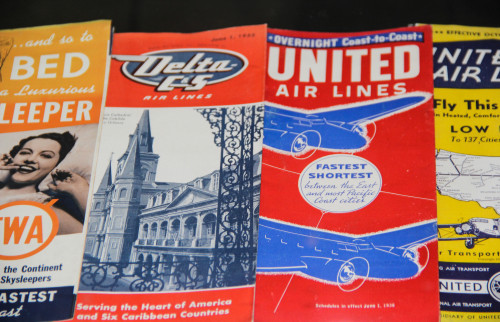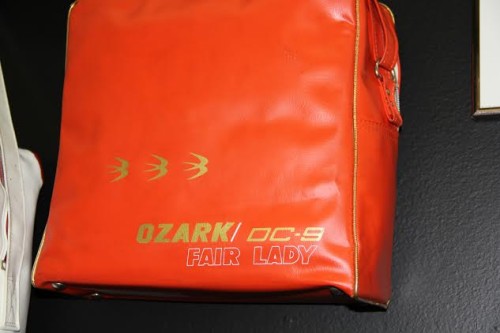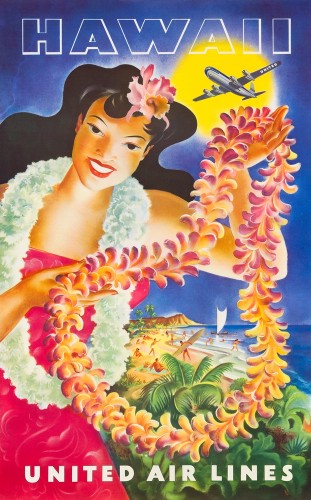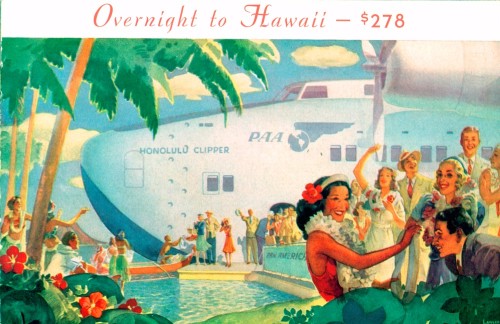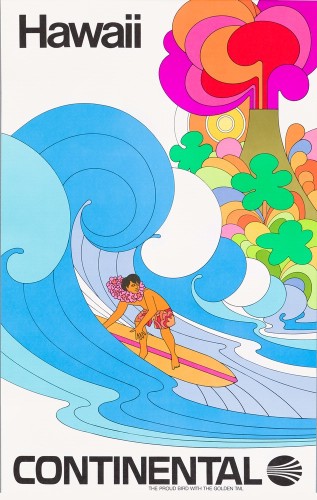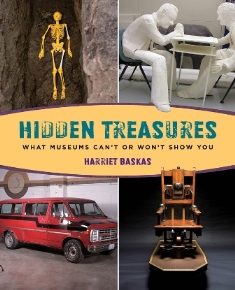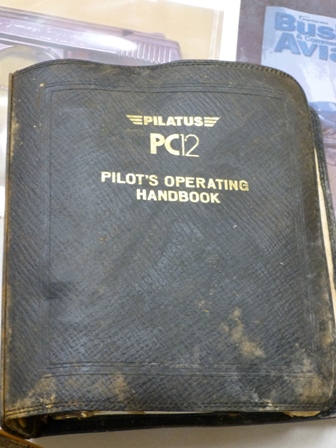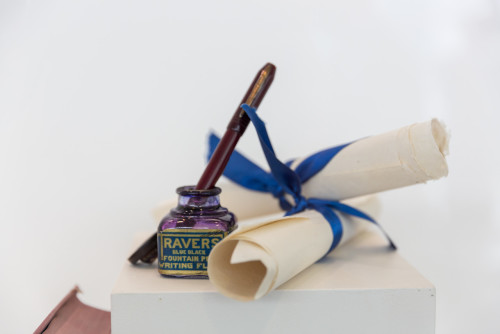
Ink & Scrolls representative of tools used before the printing press. Photo by Craig Madsen, Thomson Reuters
A new exhibit celebrating the 800th anniversary of the Magna Carta, titled Magna Carta to Minnesota: the Rule of Law, is on view between Gate C6 to 11 in Concourse C at the Minneapolis-St. Paul International Airport.
“Celebrating the 800th anniversary of the charter is important because its central to how we live our lives,” said Robyn Robinson, Arts and Culture Director of the MSP Airport Foundation, “Americans are fervent about our personal freedoms and civil rights, now more than ever. The exhibit shows us the basics of where and how those rights originated.”
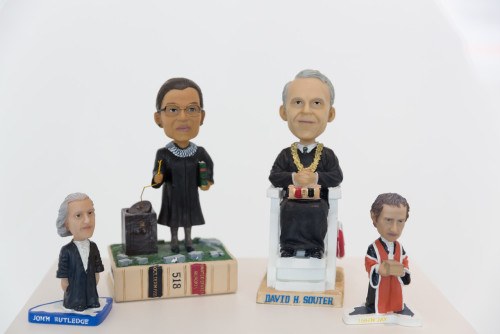
U. S. Supreme Court Bobbleheads: Justice John Rutledge, Justice Ruth Bader Ginsburg, Justice David H. Souter and Justice John Jay (1st Supreme Court Justice). Photo by Craig Madsen, Thomson Reuters
The exhibit, on view through mid-November 2015, includes more than 100 items, ranging from a a painting by U.S. Supreme Court Chief Justice Warren Burger to bobble-heads of Supreme Court justices.
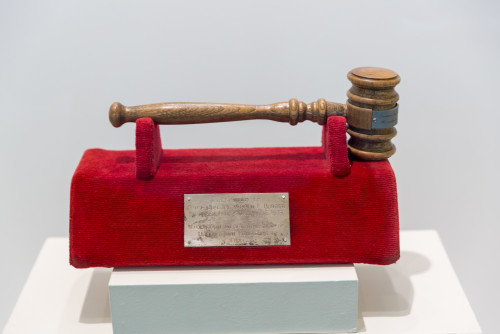
Gavel on presentation stand presented to U.S. Supreme Court Chief Justice Warren Burger. The pewter band on the gavel reads: “Turned in 1978 from an elm planted on the homestead of John Jay…CA: 1800.” Affixed to the stand is a sterling silver plate with the inscription. “Presented to Chief Justice Warren E. Burger on Queen Anne’s Day, May 5, 1979.” Photo by Craig Madsen, Thomson Reuters
The exhibit is presented by the airport and locally-based Thomson Reuters.
All photos by Craig Madsen, Thomson Reuters.
